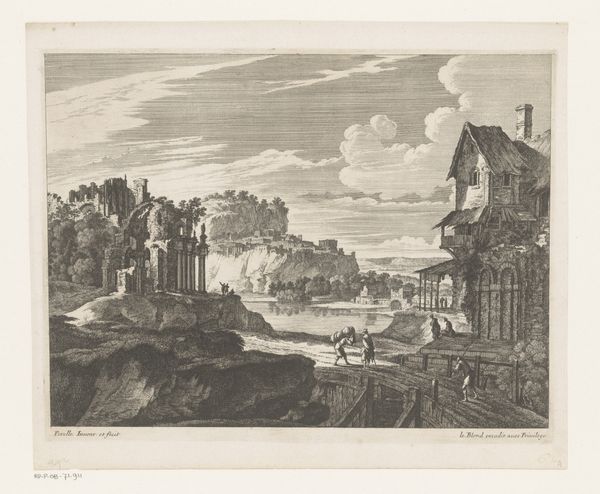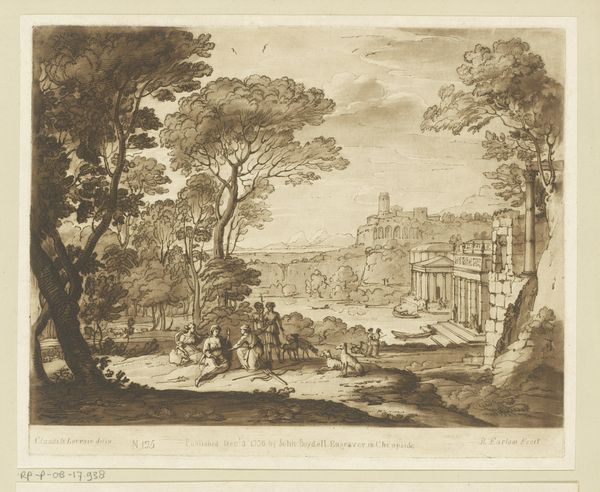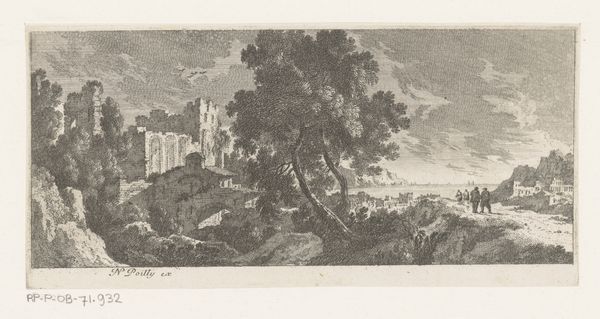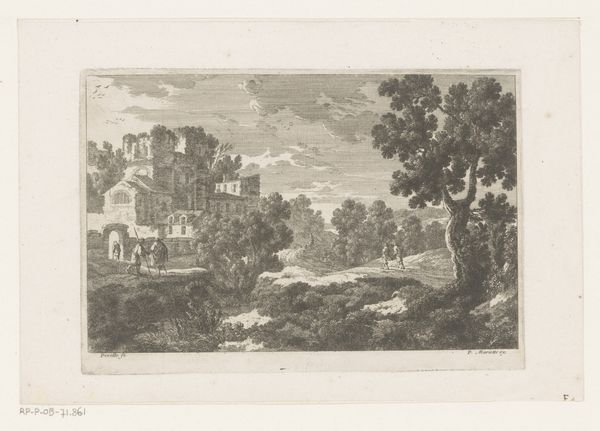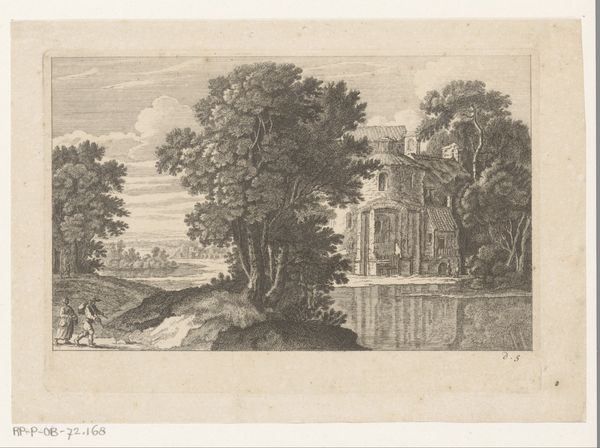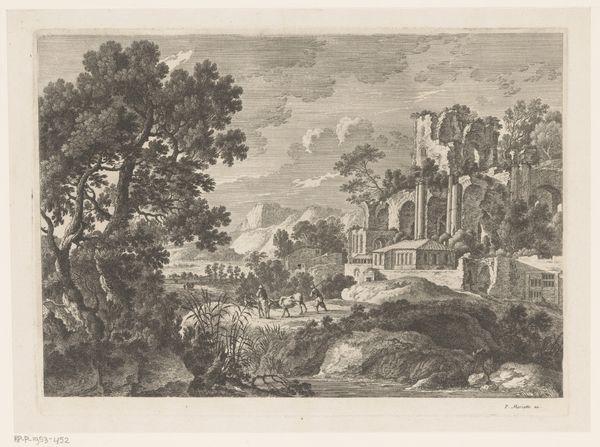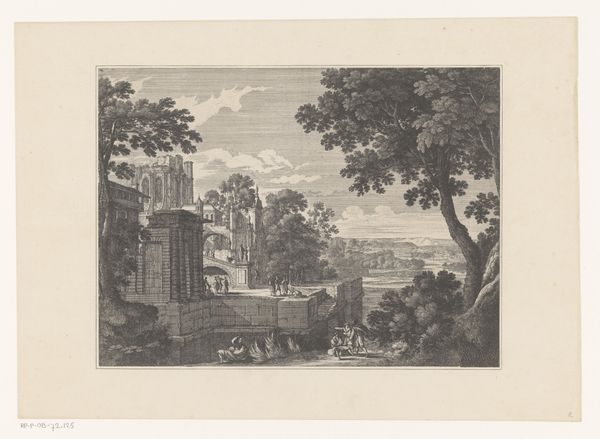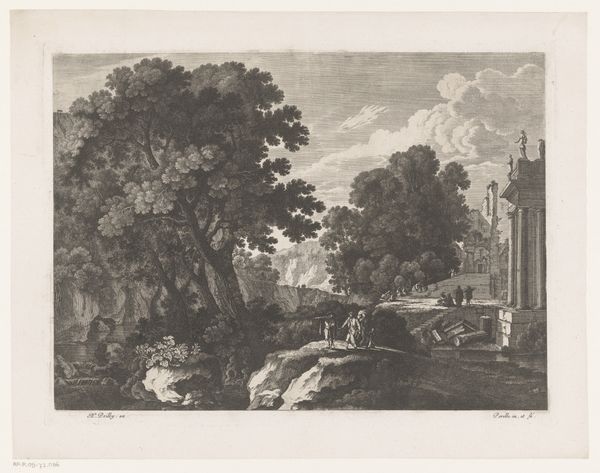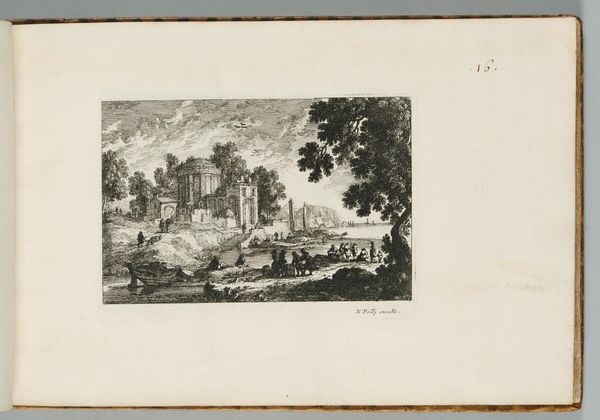
print, engraving
#
medieval
# print
#
landscape
#
cityscape
#
genre-painting
#
engraving
Dimensions: height 145 mm, width 200 mm
Copyright: Rijks Museum: Open Domain
Editor: This is “Kanaal in een dorp met links Tobias en de engel”, a print made by Isaak Major somewhere between 1586 and 1630. It's a pretty detailed engraving of a canal running through a village, and, if I understand the title correctly, depicts the biblical story of Tobias and the angel. I am curious how this medium may influence the artwork’s reception. What are your thoughts on the image? Curator: It's fascinating to consider this work through a materialist lens. The engraving, as a *print*, makes the image reproducible. This relates to broader economic structures – the printing trade, the distribution of images, and the consumption of art by a wider audience than just the elite. Consider how the story itself, made accessible through print, reaches potentially numerous individuals. The subject itself– the depiction of genre-painting and cityscape elements is relevant here as well, since these imageries were popular among middle classes. The choice of an engraving reflects how accessible art was in those times. Editor: So, you're saying the medium and how it could be distributed is crucial to understanding the work. I hadn’t thought about that. Curator: Precisely. Who do you imagine was the target market for a print like this? Did they have any spiritual goals when engaging in religious works like these, or more consumerist objectives? Editor: Probably both. You buy it because you're religious but also because you want something nice to look at or show off. Do you see the choice of "engraving" specifically contributing anything to this effect, or does its value depend solely on its replicability and distribution? Curator: The act of engraving, a manual and somewhat laborious process, contrasts with the mass-produced nature of the final product. This tension highlights the artist’s labor embedded within a reproducible commodity. Consider what kind of skills a craftsman requires to replicate all those subtle tones. Also the engraving could offer certain stylistic texture, with a "crispiness", thus being a choice to achieve specific effects. The material production informs the reading of the image. Editor: So it’s not just about what’s *in* the picture, but *how* the picture was made that gives it meaning. Fascinating. I'll keep that in mind. Thanks! Curator: Indeed. Material conditions shape not only the creation of art but also our engagement with it.
Comments
No comments
Be the first to comment and join the conversation on the ultimate creative platform.
